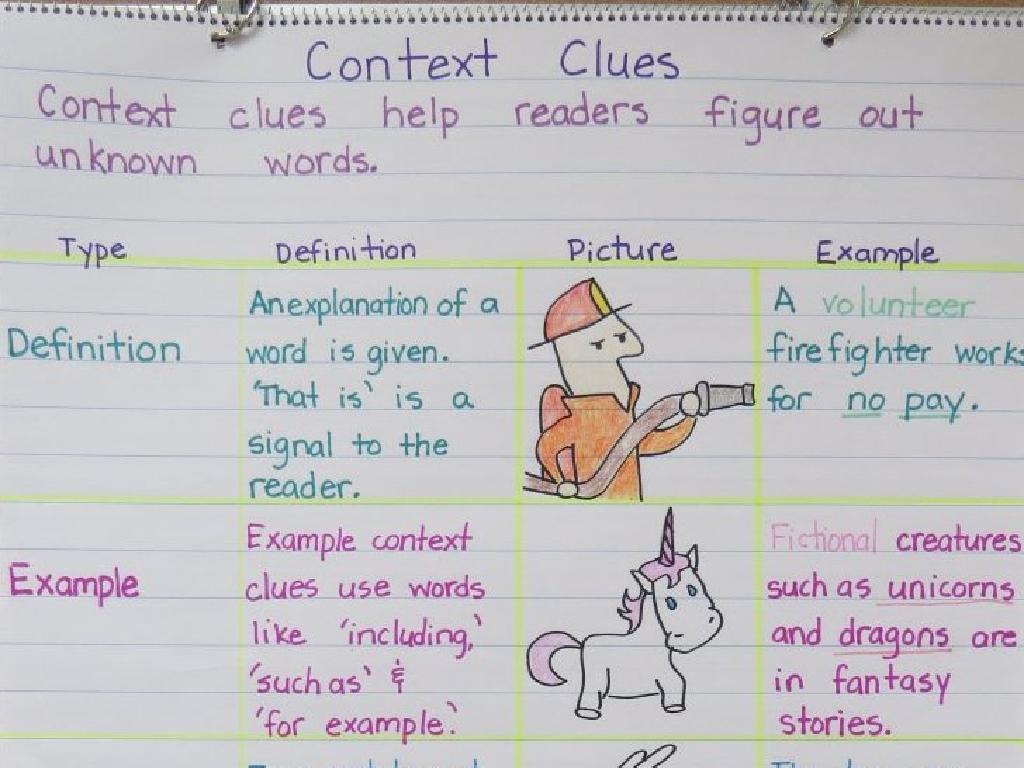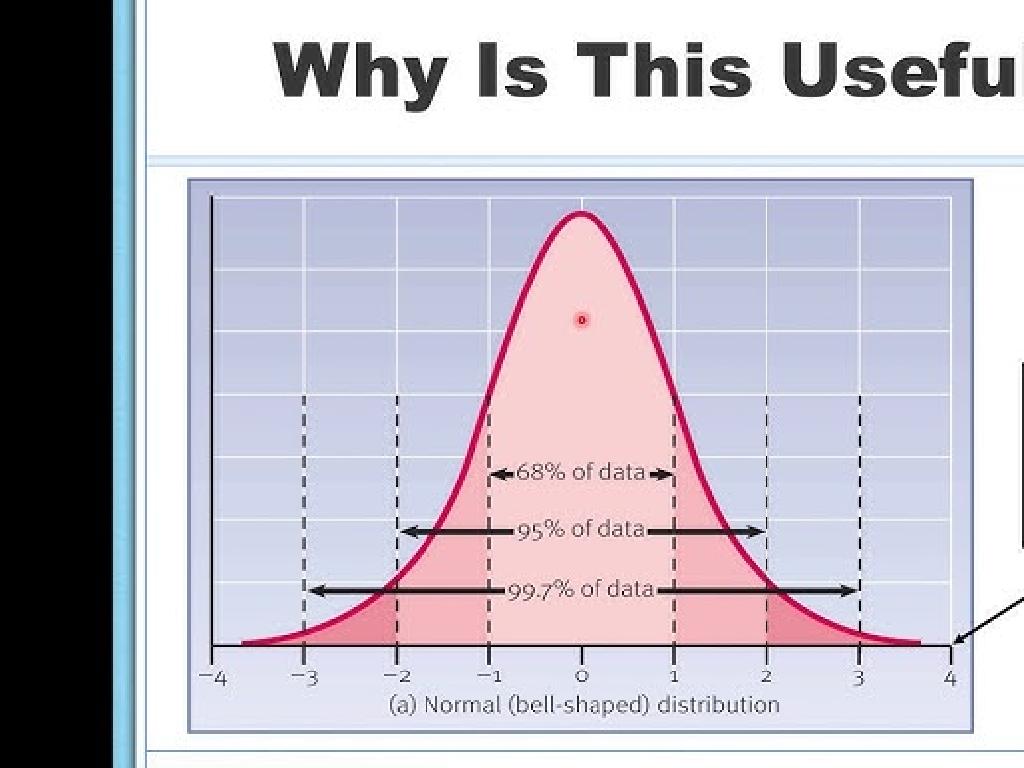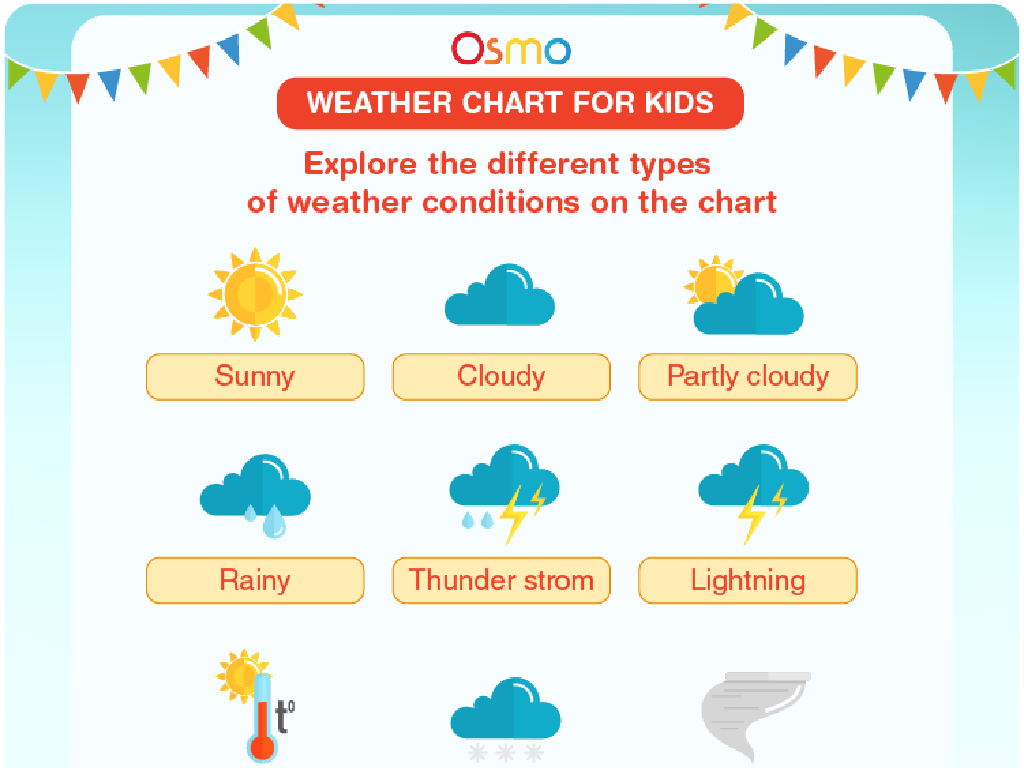Identify The Graph Of An Equation
Subject: Math
Grade: Sixth grade
Topic: Two-Variable Equations
Please LOG IN to download the presentation. Access is available to registered users only.
View More Content
Graphs of Two-Variable Equations
– Basics of two-variable equations
– An equation with two variables, like x and y, represents a relationship.
– What is a graph of an equation?
– It’s a visual representation of all solutions to an equation.
– Graphing as a useful math tool
– Helps understand relationships and predict outcomes.
– Visualizing solutions with graphs
– Each point on the graph represents a possible solution.
|
This slide introduces students to the concept of two-variable equations and their graphical representations. Start by explaining that an equation with two variables shows how one variable affects the other. Emphasize that a graph is a picture showing all the possible solutions to an equation. Discuss why graphing is important: it makes it easier to understand the relationship between variables and to predict values. Show how each point on the graph corresponds to a solution of the equation. Use simple examples to illustrate these points, and prepare to demonstrate how to plot a graph in the next lesson.
Understanding Two-Variable Equations
– Define two-variable equation
– An equation with two different variables, like x and y
– Examples of two-variable equations
– For instance, y = 2x + 3 or y = x/2 – 4
– Interaction of variables on graph
– On a graph, each variable is an axis, showing how one affects the other
– Visualizing equations as graphs
– Graphs help us see solutions where lines cross or touch
|
This slide introduces students to the concept of two-variable equations, which are fundamental in algebra. Start by defining what a two-variable equation is, emphasizing the presence of two different variables, typically x and y. Provide clear examples that students can relate to, and explain how these equations can be represented visually on a graph, with one variable on the x-axis and the other on the y-axis. Discuss how changes in one variable affect the other and how this relationship is depicted by the shape and position of the line on the graph. Encourage students to think of a graph as a picture that shows all the possible solutions to the equation. This visual representation helps students to better understand the interaction between variables and the concept of finding solutions to equations.
The Coordinate Plane: Graphing Basics
– Introduction to X and Y axes
– The X-axis is horizontal, Y-axis is vertical
– Understanding ordered pairs (x, y)
– Each point is defined by an (x, y) pair
– Plotting points on the plane
– Find x on the X-axis, then y on the Y-axis, and plot
– Practice with example coordinates
– Example: Plot (3, 2) and (-1, -4) on the graph
|
This slide introduces students to the fundamental concepts of the coordinate plane, crucial for graphing two-variable equations. Begin by explaining the layout of the coordinate plane, with the X-axis running horizontally and the Y-axis vertically. Clarify that every point on the plane is represented by an ordered pair (x, y), where ‘x’ is the position along the X-axis, and ‘y’ is the position along the Y-axis. Demonstrate plotting points by starting at the origin (0,0), moving along the X-axis to the ‘x’ value, and then up or down to the ‘y’ value. Provide students with simple coordinates to plot as practice. Encourage them to check each other’s work for accuracy.
Plotting Linear Equations
– Define a linear equation
– An equation that makes a straight line when graphed, e.g., y = 2x + 1
– Find points for plotting
– Use values for x to solve for y, creating coordinate pairs (x, y)
– Draw the line of the equation
– Connect the plotted points with a ruler to form a straight line
– Understand the graph’s meaning
|
This slide introduces students to the concept of linear equations and their graphical representations. Start by defining a linear equation, emphasizing that it forms a straight line when graphed. Explain how to find points to plot by choosing values for x and solving for y to create coordinate pairs. Demonstrate how to plot these points on a graph and then connect them to draw the line that represents the equation. Ensure students understand that every point on the line is a solution to the equation. Encourage students to practice by providing additional equations to plot as homework.
Identifying Graphs of Equations
– Recognizing linear equation graphs
– Straight lines on a graph indicate a linear equation.
– Linear vs. Non-Linear Graphs
– Non-linear graphs curve, linear graphs do not.
– Using slope and y-intercept
– Slope shows steepness, y-intercept where line crosses y-axis.
– Graphs represent equations visually
|
This slide introduces students to the concept of graphing two-variable equations. Start by explaining that linear equations form straight lines when graphed. Show examples of both linear and non-linear graphs to help students visually distinguish between them. Emphasize the importance of slope and y-intercept in identifying the specific equation a graph represents. Slope measures the steepness of the line, while the y-intercept is the point where the line crosses the y-axis. Use graphing activities to reinforce these concepts, allowing students to plot points and draw lines based on given equations. Encourage students to think of the graph as a picture that shows all the solutions of an equation.
Practice Time: Graphs and Equations
– Let’s plot points as a class
– Identify graphs of equations
– Look at the x and y values and see where they meet on the graph
– Group activity: Match graphs to equations
– Work with your peers to connect each equation with its correct graph
– Discuss our findings together
– We’ll review as a class and clarify any confusion
|
This slide is designed to be interactive and encourage student participation. Begin by plotting points on the graph as a class to demonstrate how each point represents a solution to an equation. Then, move on to identifying the graph of given equations, explaining how the shape of the graph relates to the type of equation. For the group activity, provide students with a set of equations and a variety of graphs. Each group must work together to match each equation with its corresponding graph. After the activity, regroup and discuss the findings, ensuring to address any misconceptions or questions. This will help solidify their understanding of how equations are represented visually. Possible activities include matching linear equations to straight lines, quadratic equations to parabolas, and so on.
Real-World Applications of Graphs
– Graphs in everyday life
– Visual tools for tasks like budgeting or fitness tracking
– Graphs across disciplines
– Used in science for experiments, economics for market trends
– Activity: Graph a scenario
– Choose a daily activity, plot points and draw the graph
– Understanding through visuals
|
This slide aims to show students the practical applications of graphs in various aspects of daily life and across different fields such as science and economics. Graphs are essential for visualizing data and making informed decisions. For the activity, students should think of a scenario, like tracking their weekly allowance or the temperature over a week, and create a graph using the data. This hands-on activity will help solidify their understanding of how to identify the graph of an equation by relating it to real-world situations. Provide guidance on selecting appropriate scales and plotting points accurately. Encourage creativity and discussion about how their graphs can be interpreted and used in decision-making.
Class Activity: Graphing Race!
– Team up in pairs for plotting
– Race to graph equations quickly
– First to finish correctly wins
– Review peers’ graphs for accuracy
– Check if the lines/points are plotted correctly
|
This activity is designed to make learning about graphing equations interactive and fun. Students will work in pairs to reinforce their understanding of plotting points and drawing lines for two-variable equations. The competitive element encourages engagement and focus. Provide each pair with a set of equations to graph. Once a pair believes they have correctly graphed all equations, they must call the teacher to check their work. The first pair with all correct graphs wins. After the race, have students review each other’s graphs to ensure accuracy and understanding. Possible variations of the activity could include different sets of equations for each pair, a relay race where students alternate plotting points, or a ‘graphing gallery walk’ where students observe and discuss the different graphs created by their classmates.
Wrapping Up: Graphs & Equations
– Review of graphing equations
– Practice makes perfect
– Regular practice is key to mastering the skill of graphing.
– Homework: Graphing worksheet
– Complete the provided worksheet to graph given equations.
– Keep practicing at home!
|
As we conclude today’s lesson on graphing two-variable equations, it’s important to emphasize the value of consistent practice. The homework assignment is a worksheet that includes a variety of equations for students to graph. This will reinforce their understanding of how to plot points and visualize the relationship between variables. Encourage students to try graphing additional equations on their own for extra practice. Remind them that the more they work with graphs, the more intuitive the process will become. The next class will involve reviewing the homework and addressing any questions or difficulties the students encountered.






